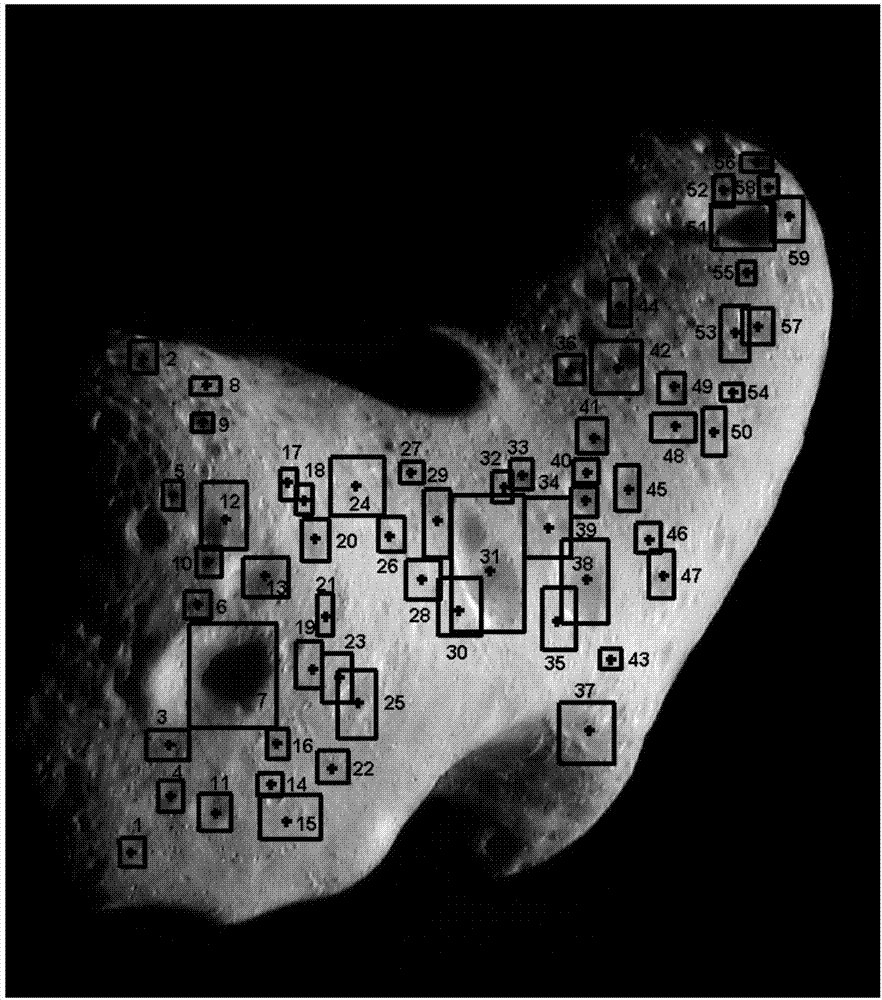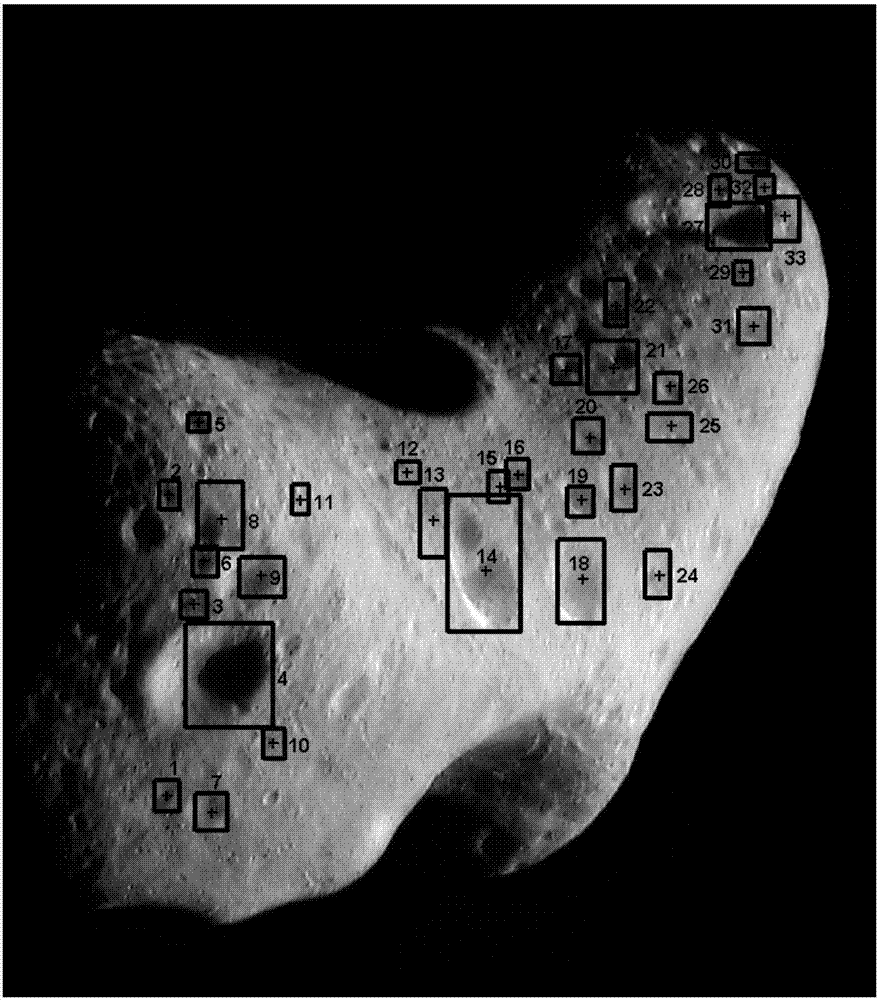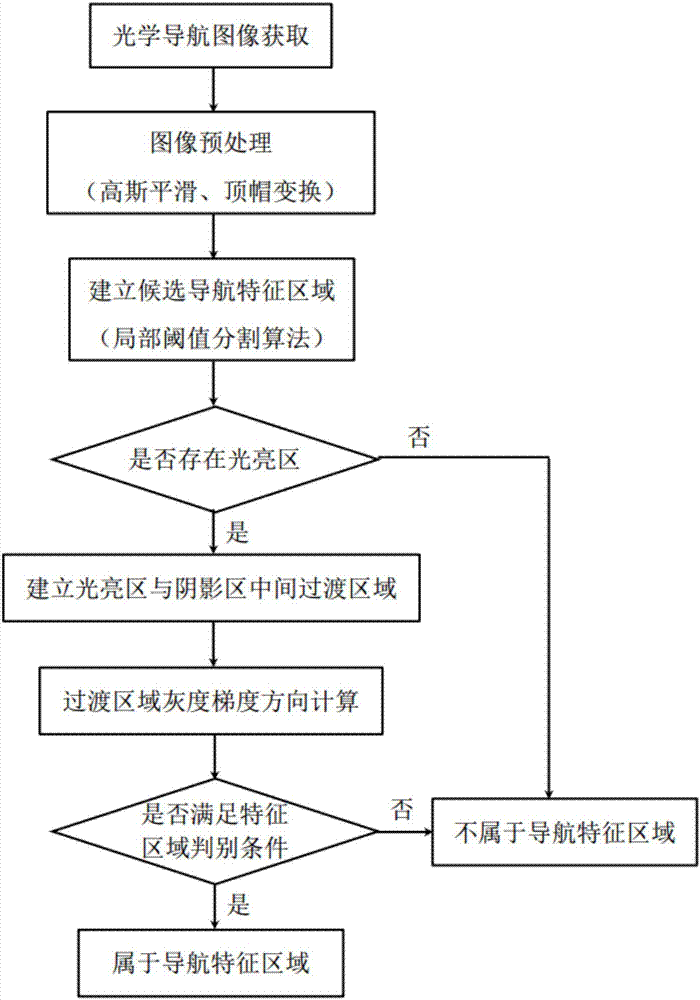Method for detecting surface navigation feature area of small celestial body
A technology of characteristic area and detection method, which is applied in the field of deep space exploration, can solve the problems of poor real-time performance, large amount of calculation, and low navigation accuracy, and achieve the effect of improving accuracy, reducing algorithm complexity and calculation amount, and improving real-time navigation
- Summary
- Abstract
- Description
- Claims
- Application Information
AI Technical Summary
Problems solved by technology
Method used
Image
Examples
Embodiment 1
[0041] This example aims at imaging the surface of the small celestial body when the probe flies around the Eros 433 small celestial body, and detects the navigation feature area on the surface of the small celestial body.
[0042] This embodiment discloses a method for detecting a navigation feature area on the surface of a small celestial body. The specific implementation method includes the following steps:
[0043] Step 1: Obtain the optical navigation image of the surface of the small celestial body, such as figure 2 shown. Gaussian smoothing filter preprocessing is performed on the navigation original image to reduce noise and high-frequency signals in the image. After that, the uneven background of the image is preliminarily eliminated by the top hat transformation, such as image 3 shown. The gray image local threshold segmentation algorithm is used to perform threshold segmentation on the processed image to obtain the image of the shaded area of interest, such a...
PUM
 Login to View More
Login to View More Abstract
Description
Claims
Application Information
 Login to View More
Login to View More - R&D Engineer
- R&D Manager
- IP Professional
- Industry Leading Data Capabilities
- Powerful AI technology
- Patent DNA Extraction
Browse by: Latest US Patents, China's latest patents, Technical Efficacy Thesaurus, Application Domain, Technology Topic, Popular Technical Reports.
© 2024 PatSnap. All rights reserved.Legal|Privacy policy|Modern Slavery Act Transparency Statement|Sitemap|About US| Contact US: help@patsnap.com










